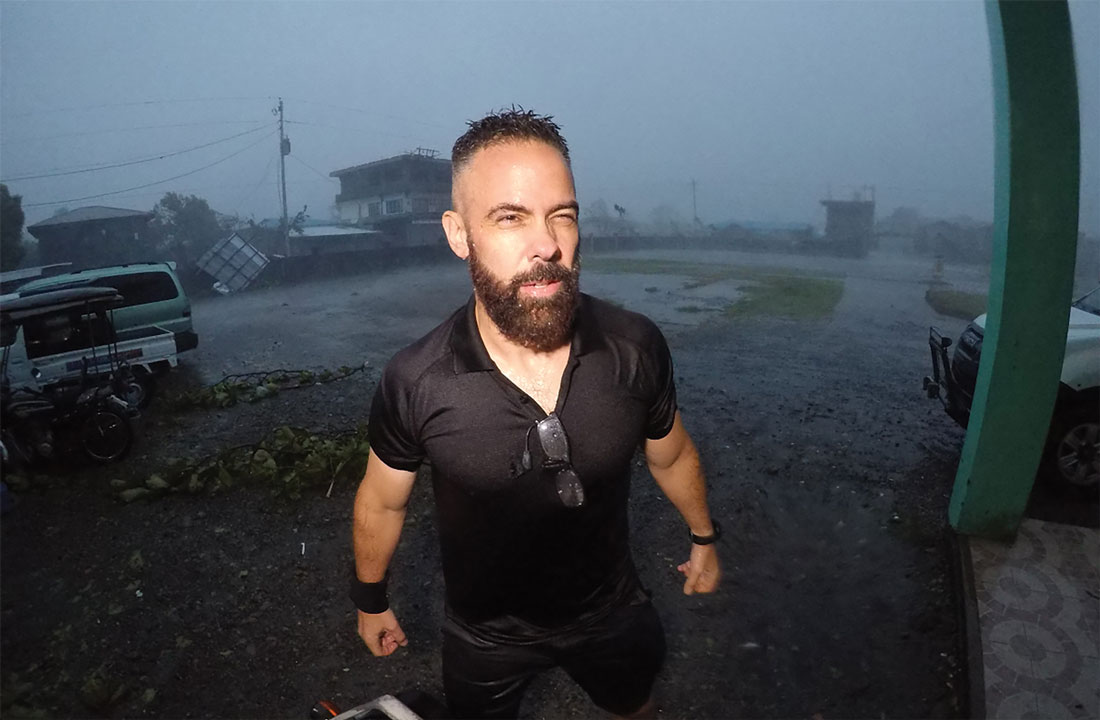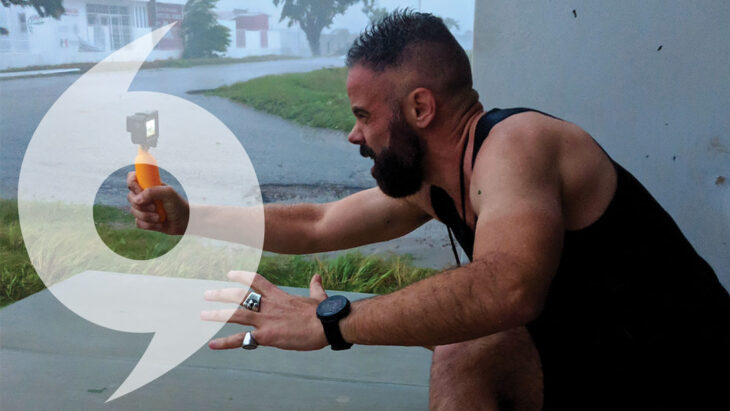 As a world-renowned storm chaser and TV personality, Josh Morgerman has been in the thick of more than 80 hurricanes. While he pursues danger all over the planet, the New York City native has a base in Bay St. Louis — where he built Hurricane House in 2024. Naturally, its designed to withstand the strongest of storms and comes complete with a state-of-the-art weather station on the back lawn.
As a world-renowned storm chaser and TV personality, Josh Morgerman has been in the thick of more than 80 hurricanes. While he pursues danger all over the planet, the New York City native has a base in Bay St. Louis — where he built Hurricane House in 2024. Naturally, its designed to withstand the strongest of storms and comes complete with a state-of-the-art weather station on the back lawn.
From hunting Super Typhoon Haiyan in the Philippines to getting trapped by Hurricane Dorian in the Bahamas, Morgerman has been prowling the globe for serious storms since he was 21 and has harbored a passion for them all his life
“It’s like an It’s an obsession that you have from the time you were born,” he says. “As far back as I could remember, you know, even when I was a toddler, I would just get excited by any kind of wild weather.”
As the Coast braces for another hurricane season, Morgerman shares his expert insights.

![]() EXPECT AN ABOVE-AVERGAGE SEASON
EXPECT AN ABOVE-AVERGAGE SEASON
While he’s a chaser, not a predictor, Morgerman has many friends in the forecasting field — and they’re in agreement about 2025.
“The general consensus among the folks whom I respect is that we are going to have another above-normal season,” Morgerman says, “maybe not hyperactive, but on the busy side and above average.” That assessment aligns with Colorado State University’s forecast, which calls for 17 named storms, nine hurricanes, and 4 major hurricanes.
Morgerman also points out that the Gulf Coast has been a hotbed of activity for nearly a decade, with U.S. storms hitting this region more often than the East Coast or elsewhere.
“So, the question on my mind is: Is this busy Gulf phase going to continue?” he says.
![]() PRIORITIZE ROOFS AND WINDOWS
PRIORITIZE ROOFS AND WINDOWS
Preparation-wise, Morgerman says the most important thing someone can do is make their home as hurricane-proof as possible. In places like Japan and Taiwan, the sites of strong typhoons, he’s been surprised to notice relatively little damage.
“You might see a broken window or a crooked sign; the cars are thrown all over the place like toys, but the buildings do remarkably well,” he says. “So, what that tells told me is OK, we can coexist with hurricanes. We just need to learn how to build for them.”
The key to any property withstanding a storm lies in two vulnerable areas, Morgerman adds: roofs and windows. Those in hurricane-prone areas should ensure that their roof is secure and in the best possible condition.
“If your roof stays on during a hurricane, you’re gonna be OK,” he says. “If it tears off, it’s like game over.”
As for windows, he calls them a home’s Achilles heel during major storms.
“You want to protect your windows not just because you’re worried about broken glass and rain getting in, but because once you have a broken window in a hurricane, the wind can get inside the building; it’s like a balloon,” he says. “It could do additional damage because the wind gets in. So with your windows, either make sure that they are impact glass or have some kind of shutter system so that you can easily cover and protect them when a hurricane is coming.”
Another home feature that matters in a storm is siding, according Morgerman, who recommends James Hardie or another type of durable siding that acts as “a coat of armor to protect the house.”
“I’ve been inside a house where stuff came through the wall driven by the wind,” he says. “So, you want to make sure you have good siding that’s really solid.”
![]() CUT THE NOISE
CUT THE NOISE
In an era of social media and instant communication, Morgerman says, trying to get a handle on an impending storm can be confusing and overwhelming.
“Back when I was growing up, the only information you had was what the National Hurricane Center put out, which was then delivered by radio and TV,” he says. “Now everyone has all these apps on their phone, and everyone’s looking at the computer models.”
The problem, he explains, is that not every source is reliable, and most people don’t know how to properly interpret what they see. People frequently ask Morgerman what technology they should use or follow, which prompts the same answer.
“I tell all of them, no apps, no computer models. You shouldn’t be doing any of that,” he says. “All you need to do is follow the National Hurricane Center. … These are the experts, and their job is to track it, tell you where it’s going and what the potential threats are.
“So, I would say relax. Stop trying to interpret computer models.”
People also should heed one other information source, Morgerman adds.
“In your town, in your county, your local officials will tell you if you need to evacuate or if you need to worry,” he says.
![]() WHEN IN DOUBT, GET OUT
WHEN IN DOUBT, GET OUT
Speaking of evacuation, how does Morgerman answer hurricane season’s most vexing question: Should I stay, or should I go? He says to weigh two factors when deciding. First, is your home at a high enough elevation to escape the storm surge? Second, is your home sturdy enough to withstand the projected wind speed?
“If you have a doubt about either of those two things,” he advises, “then leave.”
As the Coast prepares to mark the 20th anniversary of Hurricane Katrina this summer, Morgerman says those who have not experienced a direct hit might underestimate the danger. He emphasized that if told to evacuate, newcomers should heed that advice.
“So, I would say, if you don’t completely understand what a hurricane is, just follow the advice, and if you’re told to leave, get out,” he says. “You’ll be glad that you did.”
To learn more about Morgerman, his work and his adventures, visit www.icyclone.com/.


